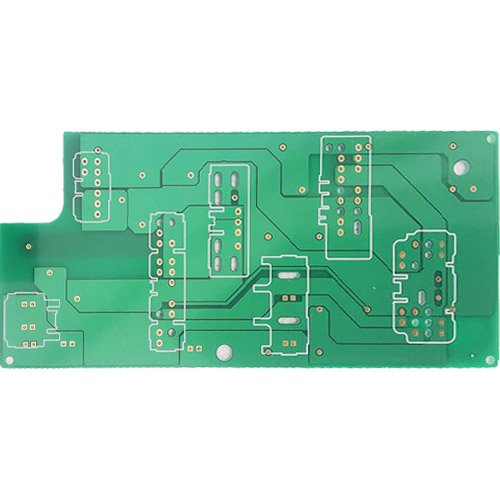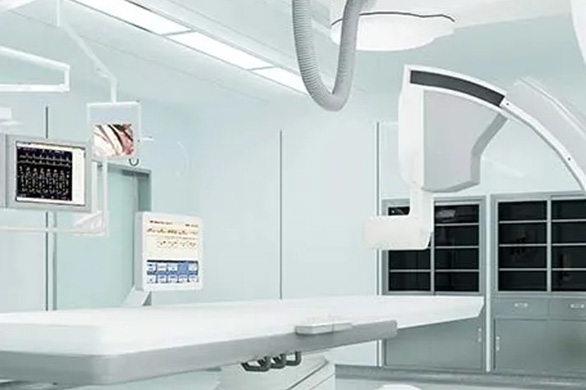Double-Sided Through-Hole PCB Boards
2 Layer Double-sided through-hole PCB boards are the most common type of PCB. Plus, 2 layer PCBs are also known as double-sided PCBs because they have components on both sides of the board.
| Layers | 2L |
| Size | 86.9*73.58mm |
| Plate Thickness | 1.0mm |
| Minimum aperture | 0.236mm |
| Line width/moment | 0.32*0.37mm |
| Surface treatment | lead-free spray tin |
Prototype to Full Turn-Key Assembly
Through-Hole Lead-Free Wave Soldering
Best Price, Genuine Components
Quality Accreditation ISO9001
-
Description
-
Specification
What is a 2-Layer PCB or Double-Sided PCB?
A 2-Layer PCB, also known as a double-sided PCB, is like a conductor of musical notes in the world of electronics. Just as a conductor guides an orchestra, this PCB guides the flow of electricity in your devices. Imagine it as a sandwich made of two layers of copper with a special material in between, acting as a silent maestro for your electronic tunes.
Two Sides, Twice the Magic:
Much like having a musical performance on both sides of a stage, a 2-Layer PCB has components on both sides. It’s the reason it’s called “double-sided.” This PCB is found in everyday electronics because it strikes a balance between complexity and cost.
How It Creates Harmony:
Imagine the top layer of copper as the lead guitarist, and the bottom layer as the drummer – each playing different roles. The magic happens when electrical signals travel through the layers, creating the melody of your device’s functions. The material in between, known as a substrate, keeps these signals from getting mixed up.
A Symphony of Components:
This PCB dance involves various players:
- Diodes and Resistors: They control the flow of electricity, like musical notes controlling the rhythm.
- Inductors and Capacitors: They add depth to the electrical signals, much like different musical instruments enrich a melody.
- Low-Pass Filters and Decoupling Capacitors: Think of them as sound engineers ensuring a smooth performance without interference.
- Transistors and Transformers: These amplify the signals, giving your electronics a louder voice.
Enter the Class D Bass Guitar Amplifier PCB:
Imagine this as the digital maestro of bass guitars. It’s a wizard in converting frequencies, creating a deep and powerful bass experience. Class D amplifiers are known for their volume control magic, and this PCB is no exception. It can deliver around 100W of power, making it a favorite choice for bass guitars. Plus, its swift response ensures your bass notes hit right on time.
In the world of Electric Guitar Speaker PCB Prototypes, every component plays a part in the symphony of sound. Together, they bring your guitar melodies to life, ensuring each strum and riff reaches your ears in perfect harmony.
| Feature | Capability |
|---|---|
| Material | FR-4 Standard Tg 140°C, FR4-High Tg 170°C |
| Min. Track/Spacing | For External layers: 4oz Cu 10mil/13mil, 5oz Cu 12mil/15mil, 6oz Cu 15mil/15mil For Internal layers: 4oz Cu 8mil/8mil, 5oz Cu 10mil/10mil, 6oz Cu 12mil/12mil |
| Min. Hole Size | 0.15 ~ 0.3mm |
| Max Outer Layer Copper Weight (Finished) | 12oz |
| Max Inner Layer Copper Weight | 12oz |
| Board Thickness | 0.6-6mm |
| Surface Finishing | HASL lead-free, Immersion gold, OSP, Hard Gold, Immersion Silver, Enepig |
| Solder Mask | Green, Red, Yellow, Blue, White, Black, Purple, Matte Black, Matte green |
| Silkscreen | White, Black |
| Via Process | Tenting Vias, Plugged Vias, Vias not covered |
| Testing | Fly Probe Testing (Free) and A.O.I. testing |
| Build time | 5-15 days |
| Lead time | 2-3 days |



